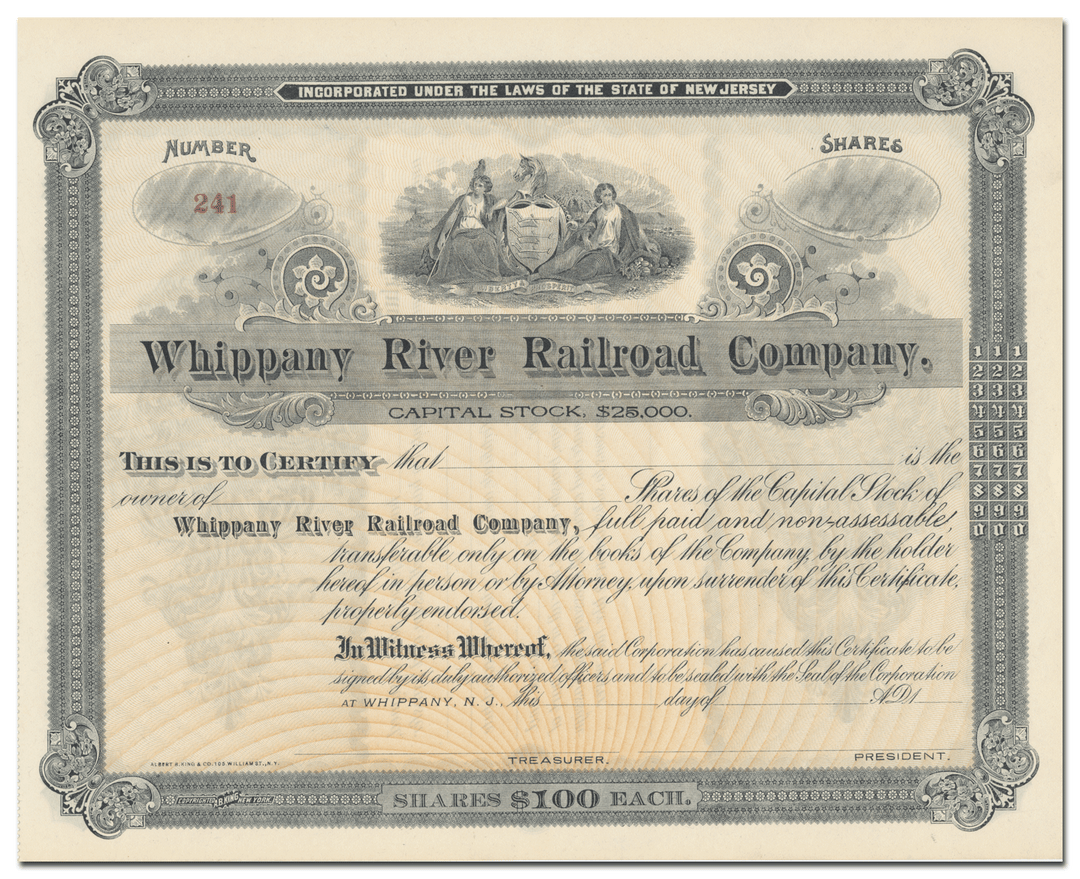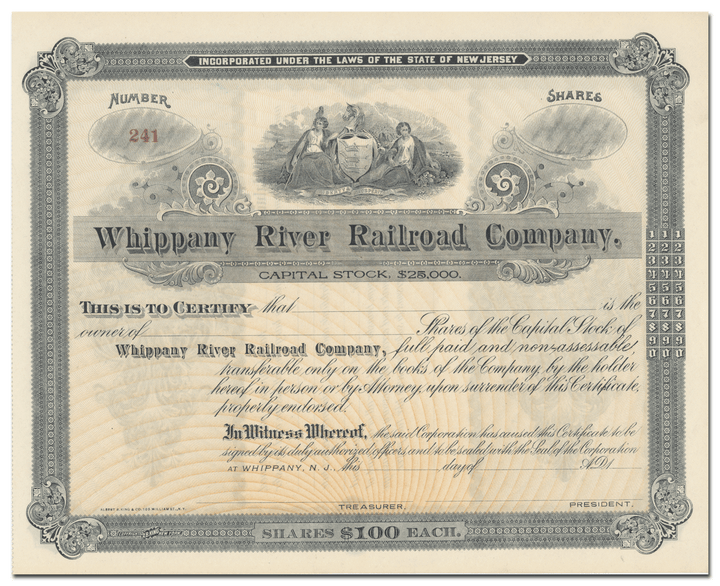Whippany River Railroad Company
- Guaranteed authentic document
- Orders over $75 ship FREE to U. S. addresses
Product Details
CompanyWhippany River Railroad Company
Certificate Type
Capital Stock
Date Issued
Unissued, circa 1890's
Canceled
No
Printer
Albert B. King & Co.
Signatures
NA
Approximate Size
10 1/4" (w) x 8" (h)
Images
Representative of the piece you will receive
Guaranteed Authentic
Yes
Additional Details
NA
Reference
Historical Context
The original Whippany River Railroad was chartered on August 1, 1895, and hastily constructed to connect Morristown and Whippany. Interchange was established with the Delaware, Lackawanna & Western Railroad (DL&W) at Morristown. When the railroad defaulted on their bonds, paper mill owner Robert W. McEwan purchased the line from its creditors in 1896. Thanks to the numerous mills and other customers located along the line, the railroad enjoyed success and was looking to expand.
Seeking a connection with the Erie Railroad, McEwan chartered the Whippany & Passaic River Railroad in 1902 to build a line from Whippany to Essex Fells. Having access to two major railroads meant that McEwan's customers could enjoy competitive shipping rates from both connections. On August 28, 1903, the Whippany River Railroad and the Whippany & Passaic River Railroad were merged into the new Morristown & Erie Railroad.
M&E operated a modest passenger service, but automobile competition ended that in 1928. Freight business grew as the mills along the line kept switching crews busy.
The economic downturn associated with the Great Depression affected M&E. Frugal management kept the railroad viable through the worst of the 1930s. M&E would be the only U.S. railroad to rid itself of all debt during the era leading up to World War II. The railroad passed out of the McEwan family by 1943 and continued under new management.
When Andrew J. Cobb III assumed the presidency in 1961, many of the mills that had been steady customers began to shut down and consolidate. In 1960, DL&W and Erie Railroad merged to form Erie Lackawanna Railway, eliminating competition for shipping rates to M&E.
By the 1970s, the Northeastern railroad industry was in decline, and M&E looked to alternative revenue streams. The Morristown shop was leased to a locomotive rebuilder for a period of time, but it was not enough. The last paper mill had closed and carloads were down to a dozen per week. The railroad tried to invest its freight earnings into non-transportation areas, but these experiments failed. By 1978 the railroad filed bankruptcy.
Related Collections
Additional Information
Certificates carry no value on any of today's financial indexes and no transfer of ownership is implied. All items offered are collectible in nature only. So, you can frame them, but you can't cash them in!
All of our pieces are original - we do not sell reproductions. If you ever find out that one of our pieces is not authentic, you may return it for a full refund of the purchase price and any associated shipping charges.









